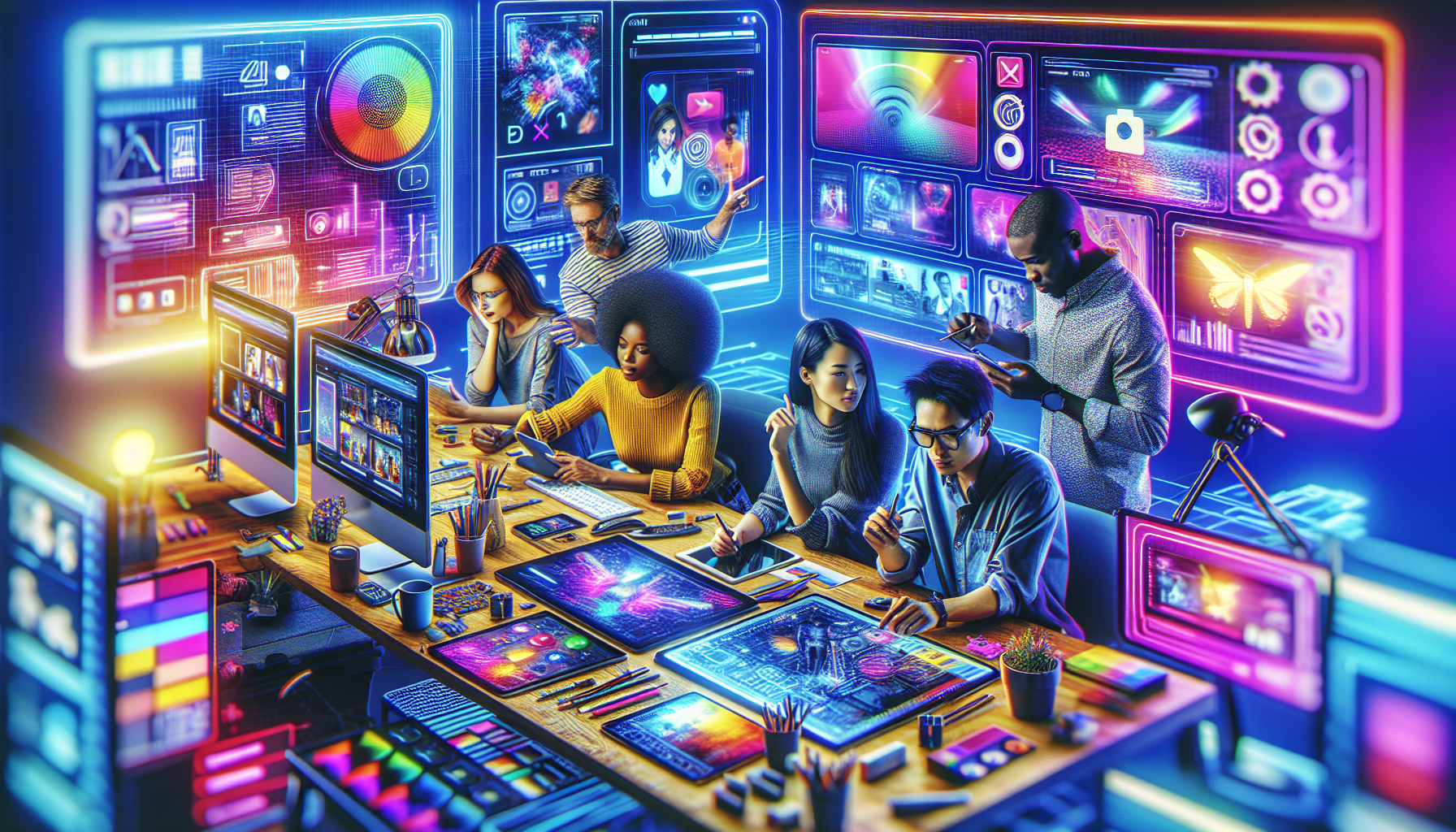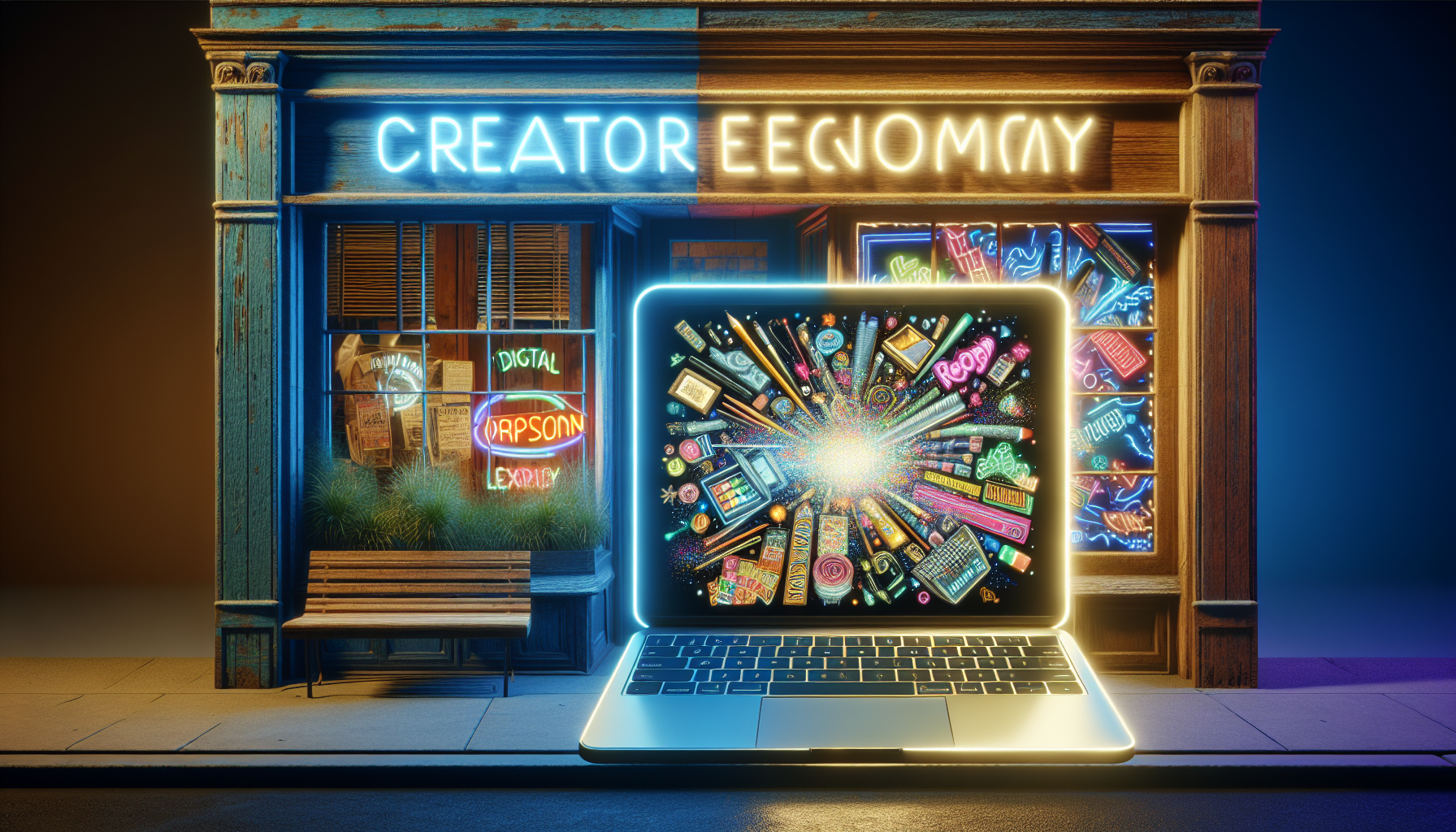
 In today’s rapidly evolving creator economy, the digital landscape has opened up unprecedented opportunities for individuals to harness their creativity and passion. This burgeoning economic model empowers creators across various platforms, enabling them to build a brand and monetize their skills like never before.
In today’s rapidly evolving creator economy, the digital landscape has opened up unprecedented opportunities for individuals to harness their creativity and passion. This burgeoning economic model empowers creators across various platforms, enabling them to build a brand and monetize their skills like never before.
What is the Creator Economy?
The creator economy refers to the community of content creators who generate revenue directly from their audiences. This model diverges from traditional media by allowing creators to control their brand narrative and income streams. Key players in this space include influencers, vloggers, podcasters, writers, and artists who leverage technological advancements to build a brand and reach global audiences.
Monetization Opportunities
Creators today have several options to monetize their work, including:
– Ad Revenue: Platforms like YouTube provide ad revenue sharing, where creators earn money based on viewer engagement with ads.
– Subscriptions: Services such as Patreon and Substack allow creators to offer exclusive content to subscribers for a monthly fee.
– Merchandising: Many creators launch branded merchandise, using platforms like Teespring or Shopify to manage e-commerce operations.
– Sponsorships and Brand Deals: Influential creators often work with brands on sponsored content, receiving payment for promoting products or services.
Platforms at the Forefront
Various platforms act as the backbone of the creator economy, supporting brand building:
– YouTube: A hub for video content, offering creators a direct line to audiences and multiple monetization pathways.
– Instagram: Ideal for visual storytelling, essential for influencers and brands seeking to engage with consumers.
– TikTok: A newer player that offers viral potential and innovative branding opportunities for dynamic content.
– Substack and Patreon: Platforms that empower writers and artists to earn from subscriptions while retaining creative control.
Impact on Digital Culture
The creator economy not only transforms personal income generation but also influences digital culture on a grand scale. It fosters an environment where anyone with talent and dedication can aspire to financial independence, bypassing traditional gatekeepers. This shift democratizes content creation, encouraging diverse voices and perspectives.
By understanding the creator economy landscape, individuals can strategically position themselves to succeed, leveraging platforms and tools that align with their unique offerings and audience needs. This emerging economy is shaping the future of work, influencing how brands communicate and how individuals engage with content worldwide.
Identifying your unique value proposition
In the competitive world of the creator economy, identifying your unique value proposition is crucial for brand building. This process involves distinguishing what makes your content, products, or services special and why audiences should choose you over others.
Understanding Your Audience
A critical step in defining your value proposition is understanding your target audience. Who are they, and what do they value? Use analytics tools on platforms like YouTube or Instagram to gather insights into your followers’ demographics and interests. Engaging with your community through comments or polls can provide valuable feedback.
Highlighting Your Strengths
Once you know your audience, reflect on your strengths:
– Unique Content: What are you offering that others aren’t? This could be a fresh perspective, a unique skill, or niche expertise.
– Personal Brand: Your persona, style, and voice are unique selling points. Leverage them to connect with your audience on a personal level.
– High-Quality Production: Consistently delivering well-produced content can set you apart, whether it’s beautifully edited videos or polished articles.
Real-World Examples
Take Casey Neistat, a filmmaker turned YouTuber known for his distinctive storytelling style and creative editing. His value proposition lies in delivering content that feels both personal and cinematic, a rare combination that drew millions of followers. Another example is fitness influencer Joe Wicks, who used his expertise and approachable persona to build a massive online fitness brand.
The Role of Platforms
Each platform offers different tools to accentuate your unique proposition. For artists, Instagram provides a visual stage to showcase creativity visually, while writers might find Substack an excellent platform for reaching dedicated readers who appreciate their unique voice. Platforms like Patreon allow creators to offer exclusive content, providing a space to cultivate a dedicated community willing to support their specific brand.
Embracing Your Niche
Remember, success in the creator economy often stems from niching down rather than trying to appeal to everyone. By focusing on a particular segment of the market, you’re more likely to attract a loyal and engaged audience, leading to sustainable growth and monetization opportunities.
By identifying and honing your unique value proposition, you’re better positioned to navigate the bustling creator economy successfully.
Crafting a compelling brand story
In the creator economy, crafting a compelling brand story is as pivotal as the content itself. An engaging narrative can profoundly influence how audiences perceive your brand, making it a crucial component of brand building. The essence of a good brand story lies in authenticity, emotion, and relatability, creating a bond with the audience and differentiating you in this competitive space.
Connect with Authenticity
Sharing your journey authentically can captivate audiences across platforms like YouTube and Instagram. Consider YouTuber MrBeast, whose brand revolves around philanthropy and grandiose challenges. His storytelling doesn’t comprise merely of viral pranks but a genuine passion for helping others, resonating deeply with viewers.
Embrace Emotion
Emotion is a powerful tool in storytelling. Whether joy, surprise, or empathy, emotional connections foster loyalty and advocacy. Emma Chamberlain, a lifestyle creator, excels at this through unfiltered vlogs and podcasts that echo her down-to-earth persona, evoking a sense of friendship among her audience.
Simplify Your Narrative
– Core Message: Decide on the main theme of your story. What message do you want to convey? This could be your commitment to sustainability or a personal mission, like mental health advocacy.
– Consistency Across Platforms: Your story should remain consistent whether told in a TikTok video, a blog post on Substack, or through Instagram stories. Consistency builds trust and strengthens recognition, key elements in brand building.
– Visuals and Voice: Use graphics and multimedia elements to enhance storytelling. Platforms like Canva can help create visually appealing content, while tools like StoryBlocks provide a plethora of audio-visual tools to enrich your narrative.
Real-World Impact
A compelling brand story doesn’t just engage—it has enduring impact. Take beauty mogul Huda Kattan, whose narrative of an entrepreneur-turned-empire-builder inspires countless budding creators. Her story reflects perseverance and innovation, elements that have cemented her stature in the beauty industry and influenced digital culture.
The creator economy thrives on stories that captivate and inspire. In this dynamic landscape, your brand story not only shapes the way you are perceived but also enhances audience interaction, facilitates community building, and opens avenues for monetization. Embrace the power of storytelling to carve your niche and flourish.
Leveraging social media platforms
Navigating the creator economy’s vast landscape requires astute command of social media platforms, which serve as gateways for brand building. As creators harness these digital powerhouses, they tap into global networks, amplifying their influence and potential income.
The Role of YouTube in Brand Building
YouTube remains a formidable platform for creators aiming to share their narratives through video content. With over two billion monthly users, it offers vast potential for virality, allowing creators to reach audiences far beyond geographic confines. Monetization avenues here include ad revenue, channel memberships, and Super Chat features during live streams, providing multiple income streams for creators while nurturing community engagement.
Instagram: The Pinnacle of Visual Storytelling
Instagram has evolved into the go-to platform for creators focused on visual aesthetics. Its features, including Stories, Reels, and IGTV, allow for dynamic storytelling. Brands can integrate seamlessly with influencers via sponsored posts or collaborations, perfect for those in beauty, fashion, and lifestyle sectors. The introduction of shoppable posts has further blended commerce with content, enabling creators to generate income directly through the platform.
TikTok and the Era of Short-Form Content
The explosive popularity of TikTok underscores the shift towards short-form content. Its algorithm rewards creativity and engagement, giving newcomers the opportunity to succeed without a massive following. Creators can partner with brands for sponsored challenges or product placements, with many now establishing successful careers through viral content alone. TikTok’s Creator Fund and in-app monetization options provide additional income pathways, solidifying its place in the creator economy.
Income through Direct Support Platforms
Beyond traditional social media, platforms like Patreon and OnlyFans empower creators to monetize directly from audience support. Offering exclusive content in exchange for subscriptions fosters deeper connections with fans, providing financial stability outside of ad-centric models.
The Impact on Digital Culture
The synergy between social media and the creator economy reshapes digital culture. It democratizes content creation, allowing diverse voices to emerge and thrive. This shift reshapes traditional employment and reinforces the viability of creator-driven careers.
Leveraging the multifaceted potential of social media platforms is essential for anyone seeking to navigate the bustling creator economy. These platforms provide the tools necessary to build an enduring brand, engage audiences, and foster sustainable income streams in a rapidly evolving digital world.
Monetizing your brand presence
In the creator economy, monetizing your brand presence is essential for transforming passion into profit. By strategically utilizing digital platforms, creators can establish sustainable income streams that reflect their personal brand and engage their audience.
Diverse Revenue Streams
To effectively monetize, creators can tap into various revenue streams:
– Subscription Models: Platforms like Patreon and Substack exemplify the subscription model, where creators offer exclusive content to subscribers willing to pay regularly for premium access.
– Sponsorship and Partnerships: Collaborations with brands offer substantial earnings. YouTube channels and Instagram pages often feature sponsored content, where creators authentically integrate brand messages.
– Merchandising: Launching branded merchandise is a lucrative strategy. Creators can design and sell products that resonate with their identity, using platforms like Shopify or Teespring to handle logistics.
– Digital Products and Courses: Many creators offer e-books, online courses, or webinars. These products enable followers to access valuable knowledge directly from their favorite creators, providing a steady revenue source.
Real-World Examples
Take Lindsey Stirling, a violinist who leveraged her YouTube fame into a multifaceted brand. Beyond ad revenue from her videos, she hosts live virtual concerts and sells branded merchandise, diversifying her income channels. Similarly, Casey Neistat monetizes his influence by collaborating with major brands and creating exclusive content through platforms like 368.
Embracing Tools and Platforms
To maximize their earning potential, creators utilize:
– YouTube: With ad revenue, memberships, and super chats, YouTube offers creators multiple monetization pathways.
– Instagram Shopping: Enables direct sales through posts and stories, merging social engagement with commerce.
– Twitch: Renowned among gamers, this platform allows direct audience support via subscriptions and bits, providing consistent income.
– Teachable and Udemy: Perfect for creators offering courses, these platforms handle enrollment and payment processing, allowing creators to focus on content.
Impact on Digital Culture
Monetizing within the creator economy is reshaping traditional notions of income generation. By harnessing the power of digital tools, creators not only gain financial independence but also contribute to a changing digital culture where passion can equate to profession. This shift emphasizes personal branding and community engagement, proving that with creativity and strategic platform use, creators can develop flourishing careers beyond conventional paths.

